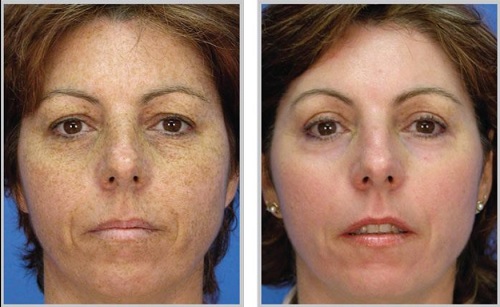Pigmented lesions occur because of varying environmental and natural sources. These factors  include genetic makeup, photo damage, free radicals, and the normal process of ageing. Pigmented lesions may also arise as a side effect of certain medications and procedures. The pigmentation can vary in shape, size, prevalence, and the intensity of the pigmentation as well. Some of the most common types of pigmented lesions are age spots, birthmarks, actinic keratosis, freckles, hyperpigmentation of the skin, and of course pigmented nevi.
include genetic makeup, photo damage, free radicals, and the normal process of ageing. Pigmented lesions may also arise as a side effect of certain medications and procedures. The pigmentation can vary in shape, size, prevalence, and the intensity of the pigmentation as well. Some of the most common types of pigmented lesions are age spots, birthmarks, actinic keratosis, freckles, hyperpigmentation of the skin, and of course pigmented nevi.
How does treatment of pigmented lesions work?
 Treating unsightly pigmented lesions are based on the selective photothermolysis principle. As long as the prescribed therapeutic wavelength is administered, and that the light energy is then absorbed in the skin’s chromophore, it will then be converted to laser heat energy which helps to break down the pigments. During treatment, the surrounding adipose and outer skin tissues of the targeted area are free from damage. In most cases, several sessions are usually applied in order to achieve the most optimum results. To treat the lesions, light energy is applied to break down the pigments or accumulated blood, but it spares adjacent skin, hair follicles, and tissue.
Treating unsightly pigmented lesions are based on the selective photothermolysis principle. As long as the prescribed therapeutic wavelength is administered, and that the light energy is then absorbed in the skin’s chromophore, it will then be converted to laser heat energy which helps to break down the pigments. During treatment, the surrounding adipose and outer skin tissues of the targeted area are free from damage. In most cases, several sessions are usually applied in order to achieve the most optimum results. To treat the lesions, light energy is applied to break down the pigments or accumulated blood, but it spares adjacent skin, hair follicles, and tissue.
The treatment depends on the client’s skin color, and specific characteristics of the dermal tissues. Dermatologists determine the parameters for administering the treatment. These include repetition rate, fluence, and pulse width to ensure the delivery of the maximum therapeutic energy to treat the condition, with as little discomfort for the patient as much as possible. There are many types of equipment that are unfortunately not capable of providing adjustable parameters to deliver customized care for each patient’s unique needs.
Understandably, the treatment of highly pigmented or darker skin is more intense since there is  a higher amount of concentrated melanin of the skin which acts as a countering chromophore.
a higher amount of concentrated melanin of the skin which acts as a countering chromophore.
